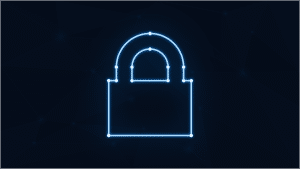Tips for faster home internet

Tips for faster home internet
In this digital age, where we rely on the internet for everything from work to entertainment, there’s nothing more frustrating than a sluggish connection to hamper our productivity and enjoyment.
Whether you’re a student, a digital nomad, a remote worker, or simply a digital enthusiast, we’ve got you covered with these invaluable tips to turbocharge your internet experience. So it’s farewell to endless buffering and hello to lighting-fast connections with our tips for faster home internet.
Checking the type of connection you have available
Unlocking the full potential of your internet speed begins with understanding the different types of connections available in Australia.
The two main networks, broadband or NBN, and wireless broadband via 4G or 5G, offer varying speeds and performance.
Within the NBN framework, there are four key connection types:
The two main networks, broadband or NBN, and wireless broadband via 4G or 5G, offer varying speeds and performance.
Within the NBN framework, there are four key connection types:
- Fibre to the Node (FTTN)
- Fibre to the Curb (FTTC)
- Fibre to the Premises (FTTP)
- and Fixed Wireless
Each connection type comes with its own limitations and capabilities, directly impacting the internet speeds you can expect to achieve. To optimise your internet experience, it is crucial to ascertain which NBN connection is being delivered to your home and familiarise yourself with its limitations.
Also, don’t hesitate to reach out to your internet service provider about faster alternatives available with your current connection, particularly for FTTN, FTTC, and FTTP options. By understanding your connection and exploring available alternatives, you can take the first step towards boosting your internet speeds and maximising your bandwidth.
Rule of thumb with NBN speeds
When it comes to NBN speeds, the general rule of thumb is that Fibre to the Curb (FTTC) and Fibre to the Premises (FTTP) connections offer the potential for maximising your internet speed. With these connections, you can expect faster and more reliable performance.
On the other hand, Fibre to the Node (FTTN) speeds can vary depending on the distance between your premises and the green box on the street. The closer you are, the better the speeds, but if you’re located up to a km away, your speeds may be impacted.
Similarly, Fixed Wireless connections are influenced by the proximity to the nearest tower and the number of users sharing it. The more people connected to the tower, the greater the possibility of reduced speeds.
Upgrade your router or modem
Once your internet connection enters the premises, it is typically connected to a device such as a router or modem. In most cases, a smart modem will plug directly into the NBN infrastructure, becoming the point of delivery for your internet connection.
While many ISP (internet service providers) supply the modem with the plan, these modems can be cheap, sluggish out of the box, or plagued with bugs that hinder their efficiency.
For improved internet speeds, it is recommended to explore better-quality modems or switch options, especially in SME environments where multiple devices are connected in one workplace. Upgrading your hardware can have a significant impact on faster internet speeds.
Upgrading your wireless access points
In a home office setup, the wireless access points are typically integrated into the modem, which is directly connected to the NBN. If your modem is older, it may only support older versions of Wi-Fi technology. The most recent standard is Wireless AC, which has become quite common and is widely implemented in modern devices. If you purchase a new modem now, it is highly likely to have Wireless AC capabilities.
Within the next 12 months, we can expect the introduction of the next Wi-Fi version: Wi-Fi 6. This new standard offers significant improvements, boasting speeds up to 250% faster than Wireless AC. As internet connections continue to get faster, it becomes crucial to ensure that your Wi-Fi connections keep up with the pace.
Share This Post
Subscribe To Our Newsletter
More To Explore

Cybersecurity
A Simple Guide to the Updated NIST 2.0 Cybersecurity Framework
Staying ahead of threats is a challenge for organizations of all sizes. Reported global security incidents grew between February and March of 2024. They increased
July 25, 2024

Microsoft
Hot off the Digital Presses… Learn About Microsoft Copilot for Finance
Microsoft Copilot has been heading up the business AI charge. It’s used in Word, Excel, Edge, Windows, and more. This genAI-powered app is also showing
July 20, 2024
